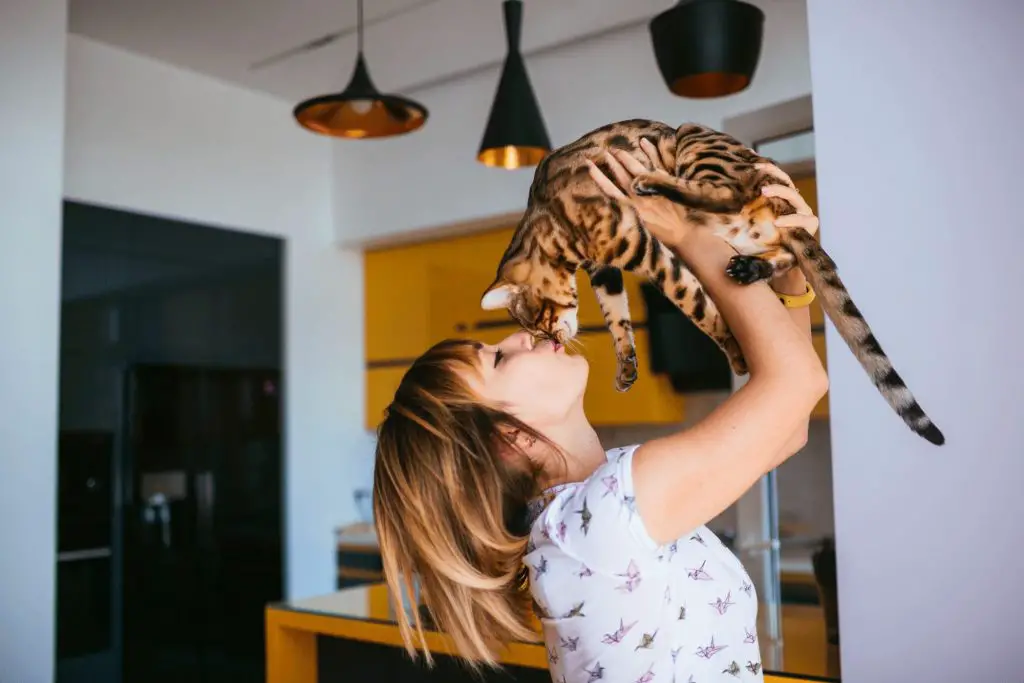Bengal cats are known to be one of the most hypoallergenic cat breeds, but they don’t seem to produce less Fel D1 (the protein that causes allergic reaction in humans) than other cats.
So what makes them less hypoallergenic?
The answer is probably in their fine coat, which is so fine it doesn’t require much grooming or maintenance by the Bengal. While Fel D1 is produced in the saliva of a cat, it gets spread around to their coat and the environment when they groom themselves. This is what causes a room full of cat allergens, and why someone might have an allergic reaction by petting a cat.
Because Bengal cats don’t need to groom as frequently as other cats, they tend to have less Fel D1 on their coat and released into the air. Less licking also means less of the dander in their fur gets spread around, making it a less allergen-rich environment.
Bengal cats also don’t have a two-layer coat like many cats do, and so they don’t leave a bunch of hair around in shedding season, further reducing contact with the Fed D1 protein.
Another untested explanation for their hypoallergenic trait is that they might just produce less Fel D1 protein in their saliva than other cats. This is true in Siberian Forest Cats, but remains to be proven in Bengals. Another untested theory is that because Bengal cats are a cross-breed of a domestic cat and a wild leopard, it’s possible that they obtained hypoallergenic traits from the leopard not found in domestic cats.
Regardless of the reason, keep in mind that hypoallergenic does not mean “no allergies”, but instead “reduced allergies”. If you worry that you still might have an allergic reaction to a Bengal cat, the only way to know is to visit a breeder and hang around the cat room for some time. Many people who are allergic to cats do report being able to own or be around a Bengal cat, but others do not. Everyone is affected differently, so it’s important to find out for sure before bringing home your own Bengal cat.














